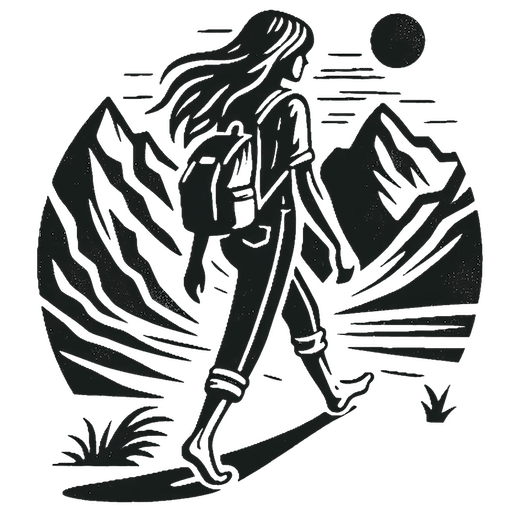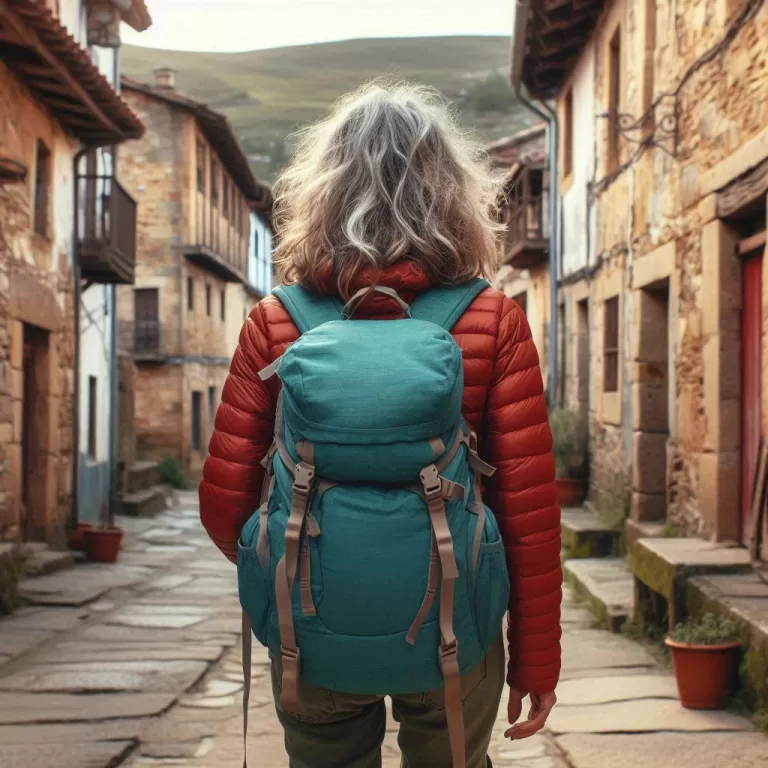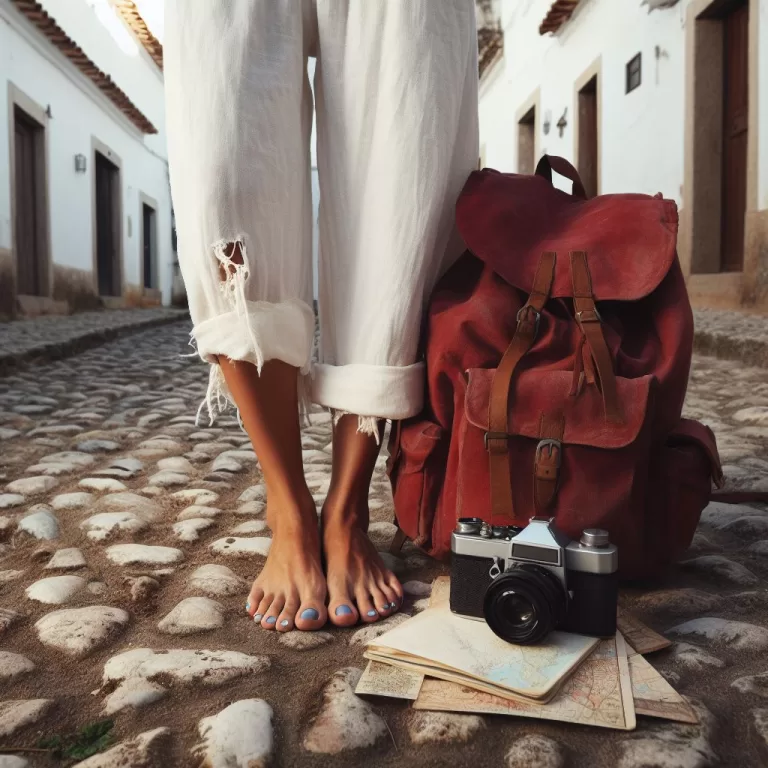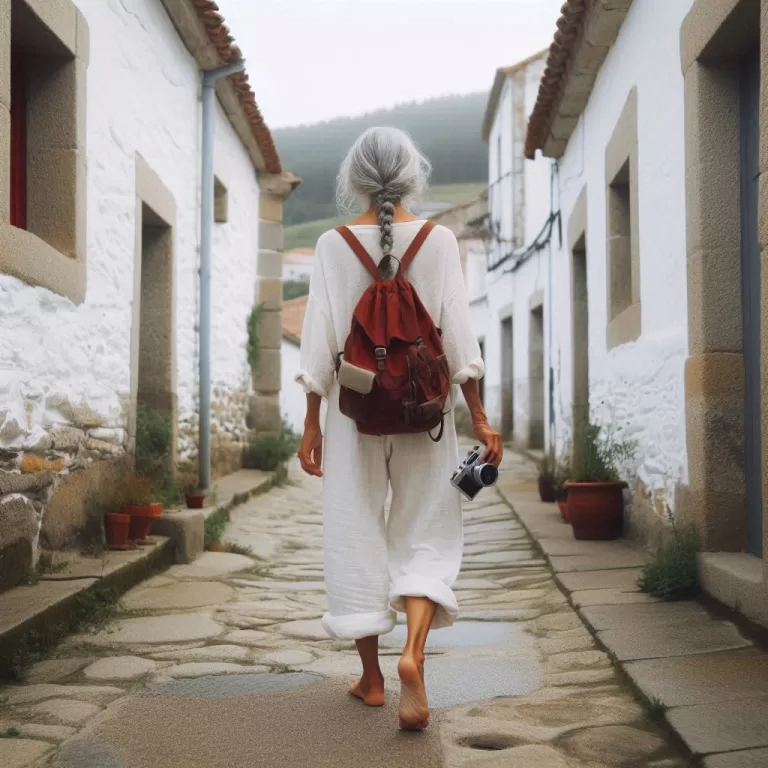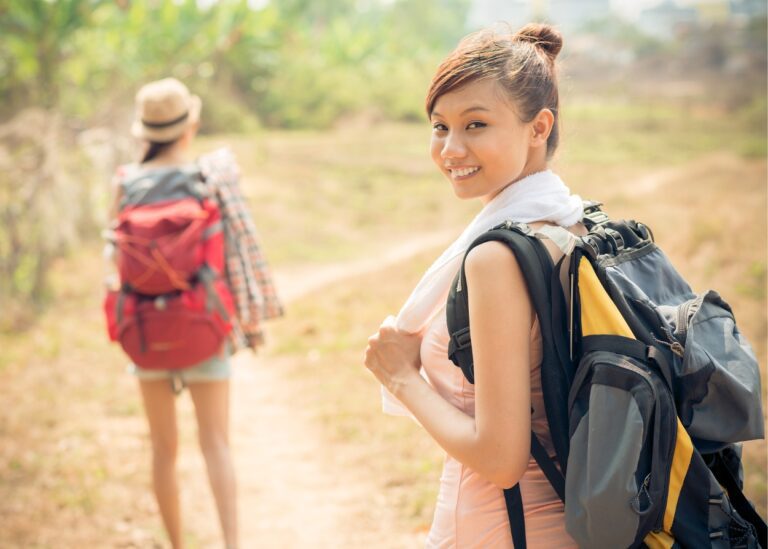Minimalist Backpacking List
Less is More: A Minimalist Approach to Solo Backpacking for Women
*CLEAN LIST WITH LINKS IS AT THE BOTTOM OF THE PAGE*
Hey there, adventurous ladies! If you’re looking to hit the trails solo, I’ve got you covered. Whether you’re a seasoned backpacker or new to the game, packing the right gear can make all the difference in your experience. But with so many options out there, it can be tough to know what to bring and what to leave behind.
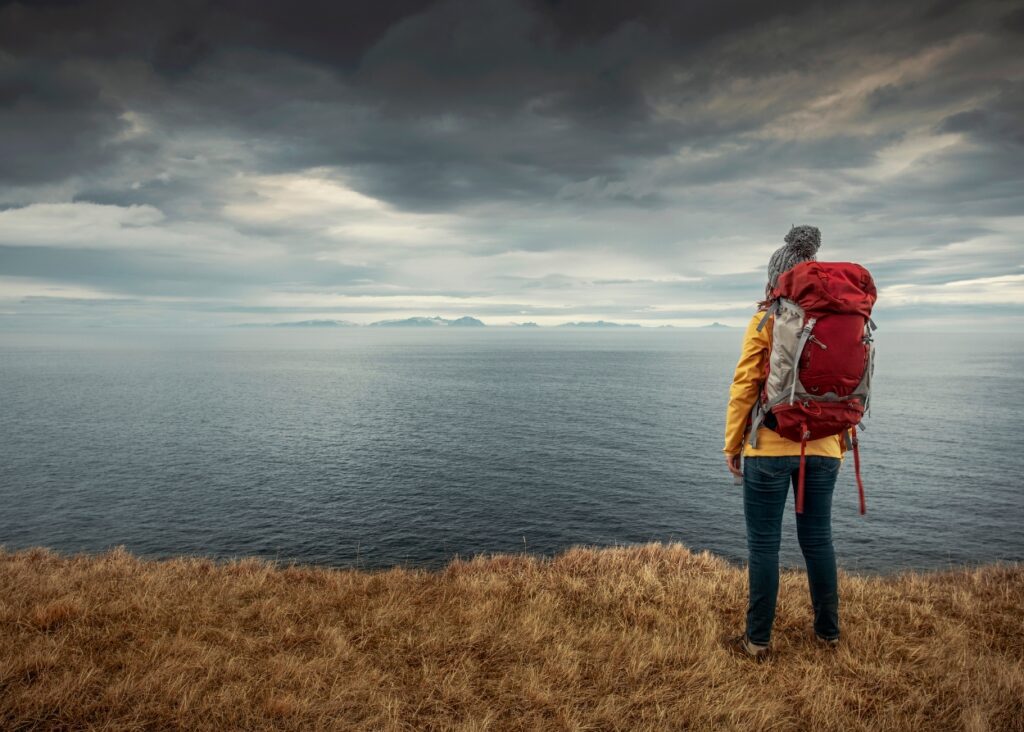
Don’t worry, The Barefoot Chica is here to help! This simple solo backpacking gear list is perfect for minimalist women adventurers who want to travel lightly and efficiently without sacrificing comfort or safety. From a lightweight backpack and shelter to essential cooking equipment and navigation tools, we’ve included everything you need for a successful solo trip. *FOR THE MINIMALIST CAMINO DE SANTIAGO LIST GO HERE.
Importance of Packing Lightly
- Enhanced Mobility and Agility: A lighter pack allows you to move more freely and navigate challenging terrains with greater ease. This can be especially important when dealing with steep ascents, rocky paths, or dense forests.
- Reduced Fatigue: Carrying less weight means your body doesn’t have to work as hard, reducing overall fatigue. This allows you to hike longer distances without feeling overly tired, making your adventure more enjoyable.
- Better Balance and Stability: A lighter pack improves your balance, reducing the risk of falls and injuries. It helps maintain a more natural posture, which is vital for navigating uneven or slippery surfaces.
Impact of Heavy Packs on the Body
- Feet: Heavy packs put additional strain on your feet, leading to blisters, soreness, and potential injuries like plantar fasciitis. The added weight can also cause your feet to swell, making your boots feel tighter and more uncomfortable over long distances.
- Legs: Your leg muscles and joints bear the brunt of the extra weight. This can lead to muscle fatigue, soreness, and increased risk of joint issues such as knee pain or tendonitis and stress fractures. *Read an article about my stress fracture incident in Spain COMING SOON. The added strain can also slow you down and reduce your overall hiking efficiency and enjoyability.
- Back: A heavy pack can lead to poor posture, causing your back muscles to work harder to support the weight. This can result in muscle strain, lower back pain, and even long-term spinal issues if the weight is not distributed correctly or if the pack is not fitted properly.
- Shoulders: The shoulder straps of a heavy backpack can dig into your shoulders, causing discomfort and potentially leading to muscle strain and nerve compression. Over time, this can lead to pain and reduced mobility in your shoulders and upper back.
Tips for Packing Light
- Choose Multi-functional Gear: Opt for items that serve multiple purposes to reduce the number of individual items you need to carry.
- Minimize Clothing: Pack lightweight, moisture-wicking, and quick-dry clothing. Layering is key, so you can adapt to changing weather without carrying too many clothes.
- Optimize Food and Water: Plan your meals carefully and bring only the necessary amount of food. Use lightweight, compact food options. Carry a water filter instead of packing large quantities of water.
- Use Lightweight Equipment: Invest in ultralight gear for your shelter, sleeping bag, and cooking equipment. This can significantly reduce your pack weight without sacrificing comfort or safety.
- Regularly Review and Refine: After each trip, evaluate what you used and what you didn’t. This will help you refine your packing list for future trips, ensuring you carry only what’s necessary.
By focusing on packing lightly and efficiently, you’ll not only protect your body from undue strain but also enhance your overall backpacking experience.
Be sure to take a medium length day hike with your fully weighted pack to get an idea of how it will feel. Adjust accordingly.
If you need any help, feel free to email me: hello @ thebarefootchica.com
*In the list at the bottom, I will provide links to what I use. There may be affiliate links to various companies, but regardless, I will provide you with exactly what I have used and tested and love!
So, let’s pack up!
Backpack: Osprey Eja 38 or Aura 65L backpack and rain cover
Shelter: Big Agnes Ultralight one or two-person tent. I use a two-person so my dog will fit.
Sleeping Bag: Big Agnes 3n1 Ultralight sleeping bag. Pricey, but ultralight and versatile.
Sleeping Pad: Ultralight inflatable or foam sleeping pad
Stove: Jetboil Stash Ultralight backpacking stove (such as a canister stove)
Fuel: Appropriate amount of stove fuel for the length of your trip
Cookware: Ultralight cooking pot, bowl, spork, and lighter
Food and Bear Canister:
Water Bottles or Hydration System:
Water Filter or Purification Tablets
Headlamp: Lightweight and bright headlamp with spare batteries
Clothing: Appropriate clothing for expected weather conditions, including a rain jacket and hat
Footwear: Lightweight hiking shoes or trail runners, and sandals
Navigation: Map and compass or GPS device
First-aid kit: Including essentials such as bandages, antiseptic, and medication as needed
Personal hygiene: Trowel, hand sanitizer, toilet paper, and personal hygiene items
Emergency Whistle: many packs have them on the sternum strap.
❥ HERE is the FULL LIST ❥
MY PLAIN LIST WITH LINKS
- Osprey Eja 38L for Shorts and Osprey Aura 65L backpack for longer trips.
- Osprey Rain Cover
- Sea to Summit Compression Stuff Sacks
- Big Agnes Lost Ranger Ultralight Sleeping Bag
- Thermarest Sleeping Pad
- Big Agnes Copper Spur UL 1 or 2
- Trekking Poles
- HydraPak Water Bottles x 3
- HydraPak Water Filter
- Jetboil Stash Cooking System
- Bowl, cup, spork (Sea to Summit)
- Small knife, tweezers, scissors
- Altra Timp Trail Runners
- Earth Runner Sandals
- Wool Short Sleeve 1
- Smartwool Wool Tank Top 1
- Boody Bamboo Jog Bra 1
- Quick Dry Undies x 2
- Creepers Wool Toe Socks x 2
- REI Quick Dry Shorts with Liner 1
- REI Quick Dry Pants
- Marmot Polartec Fleece Top
- Outdoor Research Down Jacket
- Outdoor Research Rain Jacket
- OR Wool Beanie
- OR Gloves
- Bandana
- Sunglasses
- Sea to Summit Wilderness Wash
- Quick Dry Microfiber Towel optional
- Nail Clippers (depending on length of hike)
- Lip Balm
- Q-tips
- Agave Wash Cloth
- Glasses
- Contacts
- Toothpaste
- Toothbrush
- Floss
- Hair Brush
- Hair Ties
- Vitamins
- Aquilea Potassium/Magnesium Tablets
- TP
- Trowel
- Wet Wipes optional
- Ziplocks
- USB Rechargeable Headlamp
- Portable Battery Bank with Nomad small solar panel (depending on trip length.)
- Phone and Charge Cord
- Food (specific list coming soon with some of my favorites.)
- Bear Cannister
- Small Waterproof Fanny Pack I wear it on the front. I put phone, lip stuff, and small bear spray here.
- Face lotion/sunblock
- Map or App
- Small first aid kit
- Lighter
- Bear Spray
